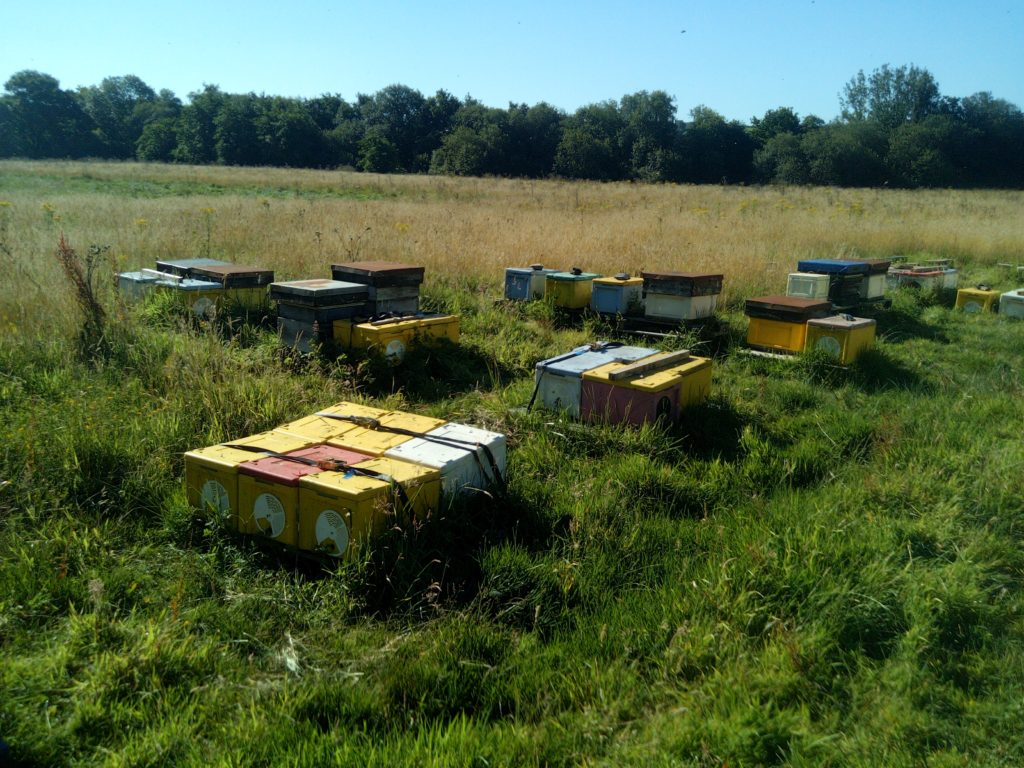Beekeeping has been considered part of country life for many years. Its popularity as a hobby has increased in recent years with a small resurgence of UK honey farmers. There are are few well established honey farms within the UK which can trace their heritage back a few generations.
Although beekeeping is often perceived as a hobby for older generations, it is highly accessible to individuals of all ages. As with many skills which have traditionally been passed from generation to generation, it can be hard to work out where to start with beekeeping. With masses of information available from books, associations and the internet it can seem quite daunting. But don’t worry, Beekeeping is an enjoyable learning experience and we have laid out a few pointers to get you started.
Where to Start?
The best place to start is by getting a bit of basic knowledge of honeybees and beekeeping. As a beekeeper you will become responsible for the welfare of your bees. The first thing to research is how a colony functions. By understanding the roles of the bees within the colony and a colony’s yearly cycle, you will be well placed to interpret what you see within a hive.
We run a number of beekeeping courses which will help you get started. These courses can be booked via our website and are held here in North Devon.
Book your course here
The Colony
A colony is made up of three types of bee, The queen bee, workers and drones. Each plays an important role in the development of a colony and its function.
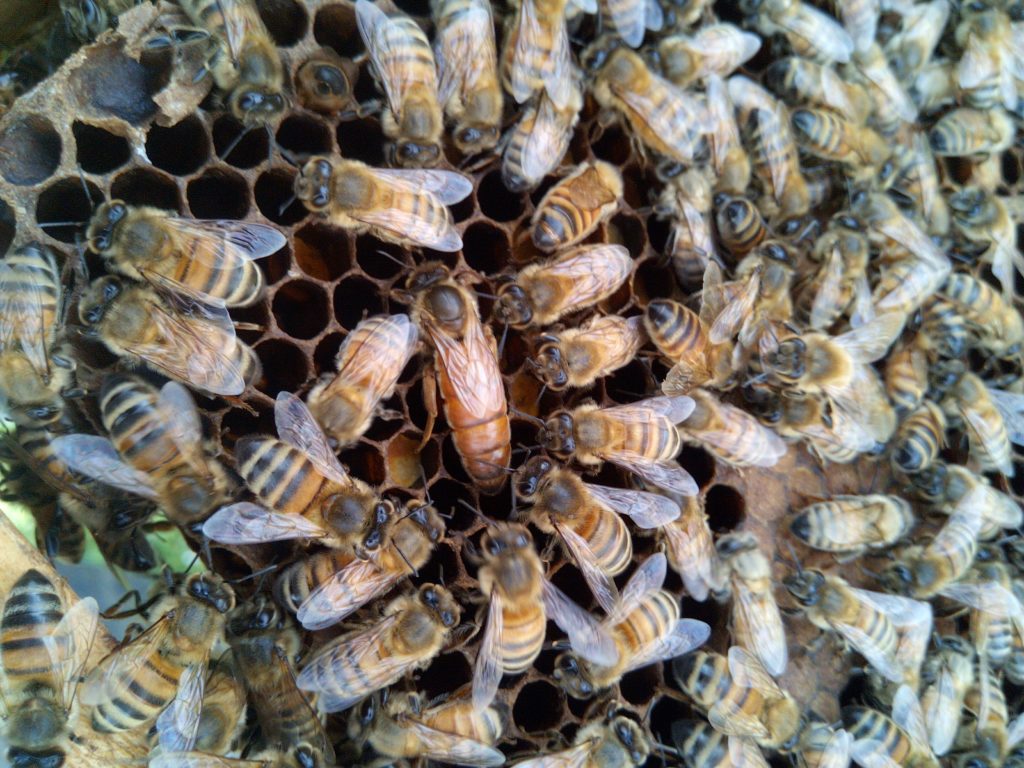
The Queen Bee
The queen bee is the reproductive female of the hive. Her job is to maintain the hives population by laying fertile and un-fertile eggs. These will develop into workers and drones respectively.
Being the longest lived of the bees within the colony, the queen has long been recognised as the most important individual. However, despite popular belief, she is not in charge of the hive and is better thought of as an egg laying slave. Conversely, it is the worker bees that make the majority of decisions.
Worker Bees
Worker bees are all female and, as their name suggests, do most of the work within and outside of the hive. The jobs which they carry out change the older they get, with the oldest bees working as foragers outside of the hive.
Although the workers do the majority of work, they also make most of the decisions within the hive. Honeybees employ a harsh democratic system. Once a decision has reached a majority support, any bees opposed will be roughly persuaded to support. This means that once a decision has been made, it will receive the full support and energy of the hive.
Worker bees make up the majority of the hives population. they will number between 15000 to 60000 individuals depending on the time of year. Although they make the majority of the decisions, the hives population is controlled by the queen and her rate of lay.
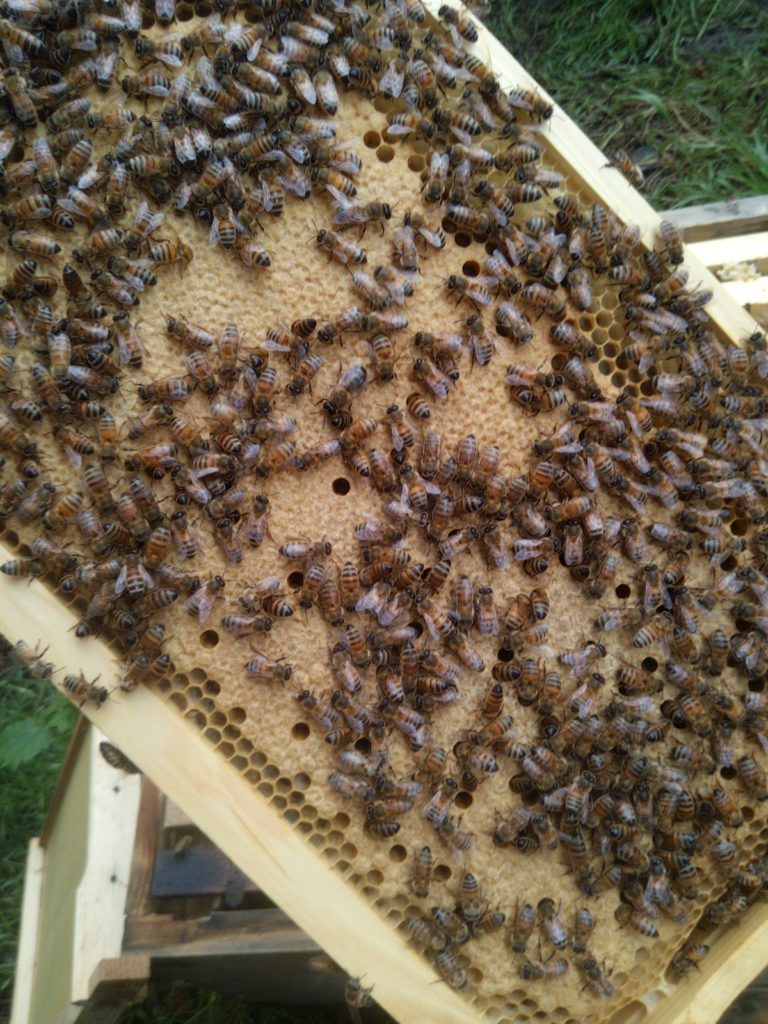
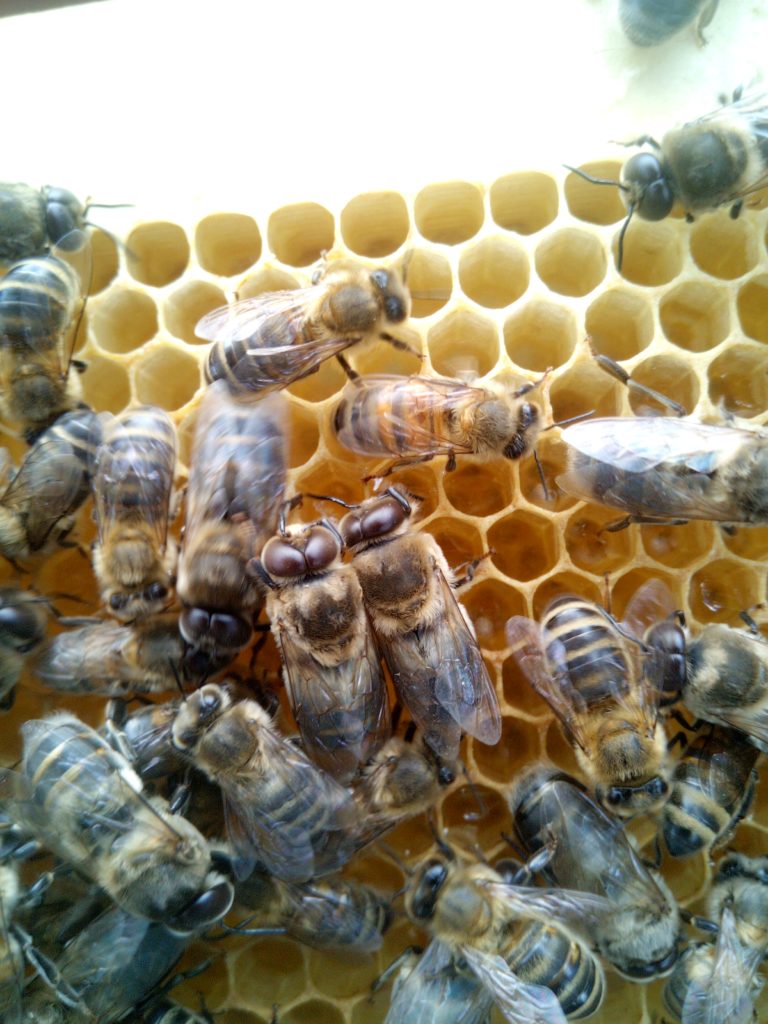
The Drones
Drones are male honeybees, they develop from un-fertilised eggs. They take longer to develop than workers and queens and are produced purely for reproduction.
Drone are adapted for finding and mating with virgin queens. They have large eyes and a large powerful body to help provide sustained flight. On mating with a virgin queen, a drone will shortly die. Drones are so adapted for reproduction that they don’t develop any anatomy which is not required. Therefore, they do not develop a sting or any means to forage for themselves.
A virgin queen will mate with 10 – 20 drones in a single mating flight. Averagely, queens will have 1 – 2 mating flights before they commence laying. These mating flights will provide the queen with enough genetic material to lay for 3 – 4 years.
Beekeeping Equipment
It is easy to get caught up with all the beekeeping equipment, from frame holders to 48 frame extractors. Although, it sounds like you should be buying everything out the beekeeping catalogue, you actually need very little to get started.
Basic equipment
The basic equipment you need to start beekeeping is relatively straight forward. You will require a hive. There are many styles of hive available and they all work in a similar way. It is important to find a type of hive which you are comfortable working with.
The most popular hive in use in the UK is the National hive. Though there are many beekeepers using langstroth hives which is a world favourite.
You will also require protective equipment, this will consist of a beekeeping suit, gloves and a good pair of boots. In addition, a smoker and hive tool will be needed to work the hive.
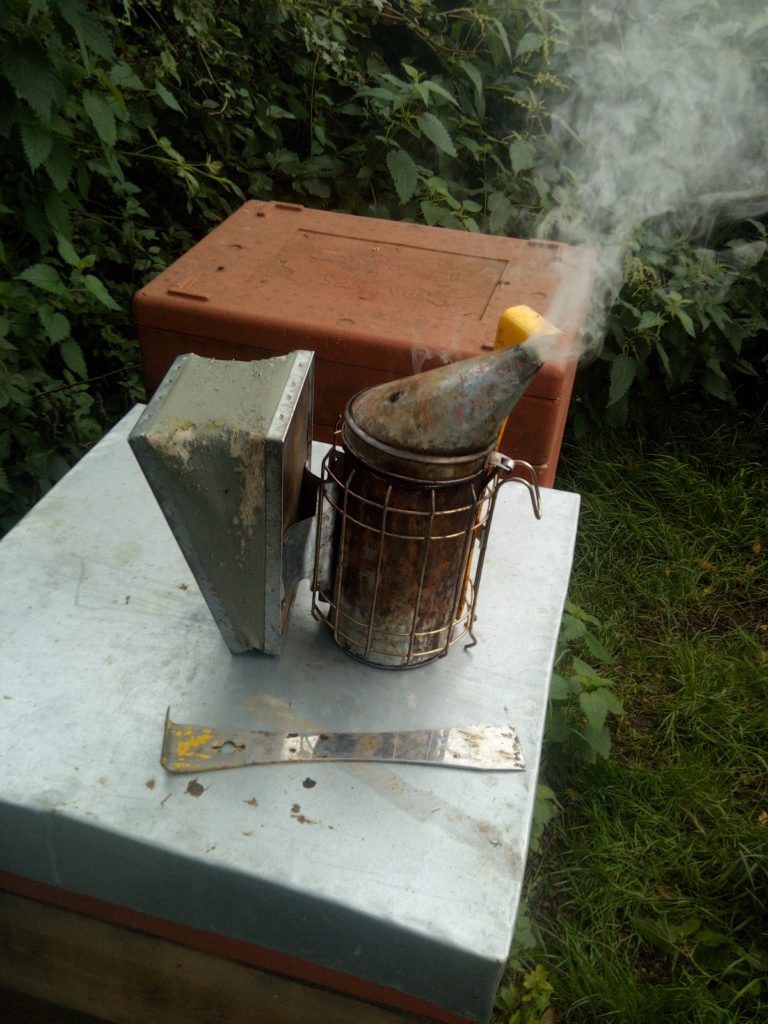
Getting Bees
Before getting your bees, it is worth getting a bit of practical experience to get used to the handling bees. We run a number of practical beekeeping courses which can be booked through our website here.
Obviously we are going to suggest that you get your bees from us. We offer 6 frame nucleus colonies for sale which we will deliver to you. If you are booking to take a course with us, you may even like to arrange to pick your bees up on the day.
What is a nuc?
A nuc or nucleus colony is a colony occupying 5 to 6 frames. It forms a core unit of a hive and is an ideal starting point. When a nuc arrives, it is often ready to be transferred straight into a full size hive. As it grows it will give you a chance to become accustomed to the dynamics of the hive.
Nucs are made by taking bees from an established colony and introducing them to the nuc box with a queen. Once the queen is released into the nuc by the bees, she will start to lay and the colony will begin to grow in size. This is an effective method of producing new colonies.
Overwintered nuc or Spring nuc?
The difference between an overwintered nuc and a spring nuc is when they were raised and how established they are. Overwintered nucs are raised in the previous year and have become well established. Once an overwintered nuc is ready to send out it is much the same size of any other overwintered colony and is best transferred directly into a hive.
A spring nuc is a colony raised the same year as it is sold. As their name suggests, they are often started in the spring. A spring nuc spends its first year building up to become a full size colony. Generally they will not produce a honey crop in their first year. Spring nucs can often be moved into a hive once they arrive, though can be left in their nuc to build up some more.
Once a nucleus colony has been transferred to a hive, it is important to ensure that they have adequate stores to expand. It may be necessary to provide the colony a feed of sugar syrup. This is often the case when the weather is poor.
Beekeeping – what’s involved
